10 Beautiful Mt Hood Birds to Watch For
Posted by Betsy LaBarge | Thursday, April 16, 2020
With multiple lakes, a national forest and birding trails, Mt Hood is a bird-lover’s paradise! The USDA Forest Service tracks a list of over 180 birds from 40 families that are known to make an appearance at Mt Hood. Some of these birds frequent the area, and others make surprise appearances while migrating. The Oregon Cascades Birding Trail is an excellent place to look for many of these magnificent birds, and the Mt Hood Loop section of this trail will take you along the Columbia River and the base of Mt Hood.
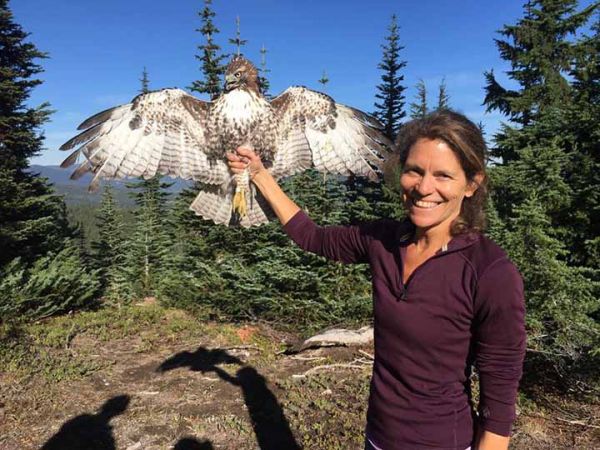
Another notable site to bird watch in Mt Hood, Oregon is at Bonney Butte HawkWatch. This is a bird study site in Mt Hood National Forest, only six miles from Government Camp. They offer an excellent hawk watching site and educational programs from late August through October each year. If you’re planning on stopping by the Bonney Butte HawkWatch, the best time to go is between September 7th and October 12th, during “bulk passage” (that’s when the most raptors are migrating through the area).
Whether you’re a birder trying to check some more birds off your list, or a novice who enjoys their beautiful songs, we hope you enjoy our 10 favorite Mt Hood birds to watch for.
10 Beautiful Mt Hood Birds to Watch For
#1 – Green-Winged Teal
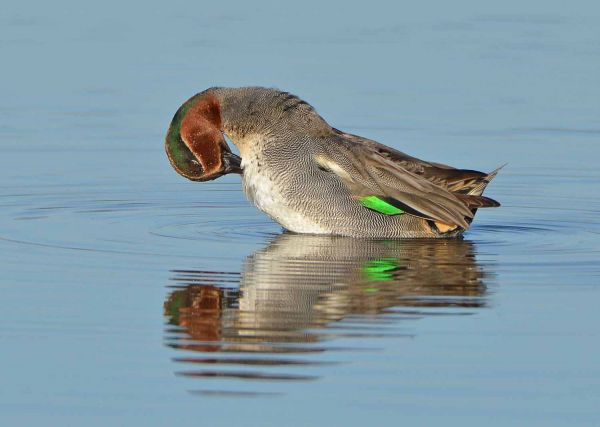
This beautiful duck is the smallest of the North American dabbling ducks and the males sport a green eye patch. The Green-Winged Teal is very common in North America, and Oregon is home to them year-round. Green-Winged Teals love inland lakes and shallow streams, and begin nesting in late May and early July. Did you know that they enjoy searching for food on mud flats more than any other species of duck?
#2 – Bufflehead
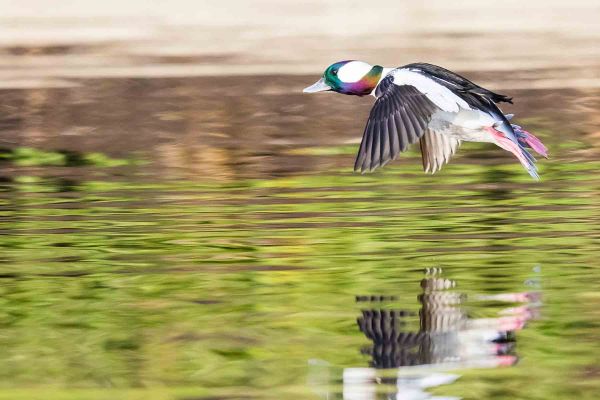
The Bufflehead is so beautiful it surely must be Photoshopped, right? This small sea duck is one of America’s smallest ducks, along with the aforementioned Green-Winged Teal. The males sport a mesmerizing iridescent helmet, and they puff out the feathers on their head to look larger. If you’re a birder, you’ve likely heard of the Bufflehead before. Did you know that they are known as the “spirit duck”? The Bufflehead winters in Oregon and Timothy Lake in the Mt Hood National Forest is a great place to spot them.
#3 – Red Tailed Hawk
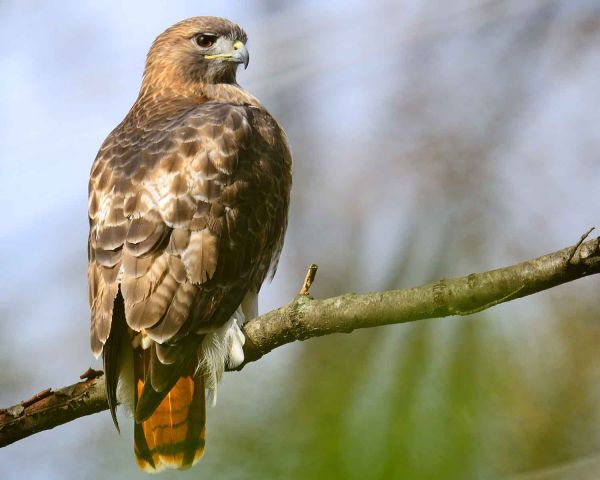
The Red Tailed Hawk is a bird of prey which is very common in North America. Did you know that they can acclimate to a great variety of habitats? They are found in places such as deserts, forests, urban areas and more. The Red Tailed Hawk will eat a variety of prey, like rodents, ground squirrels, and even lizards.
#4 – Green Heron
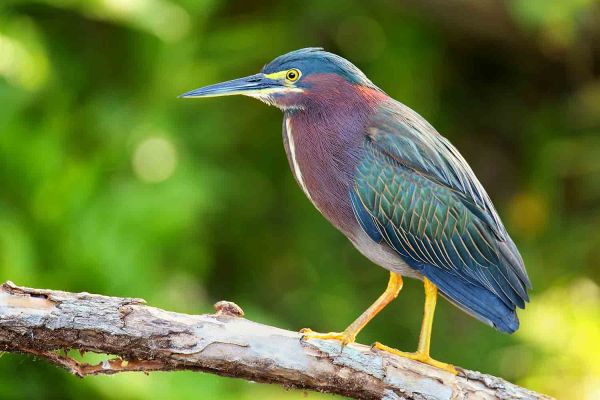
This small bird has a glossy greenish cap and back with a chesnut neck and underbelly. The Green Heron is interesting for its intense courtship displays which lead to seasonally monogamous relationships. They like to nest high up in trees in the forest laying two to six eggs a time. Did you know that baby Green Herons can start to fend for themselves at just 30-35 days old?
#5 – American Wigeon
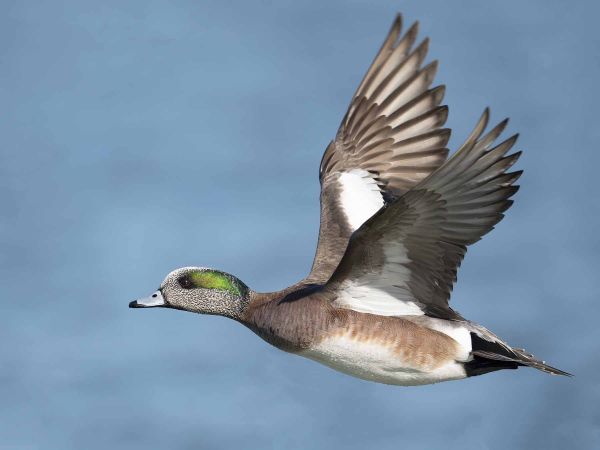
The American Wigeon is another dabbling duck species on our list, and the male sports a beautiful green eye patch like the Green-Winged Teal. The American Wigeon breeds throughout Oregon, but likes to winter in the South. They are often referred to as “poachers” or “robbers” because they hang around with diver birds and grab pieces of food brought to the surface.
#6 – Barrow’s Goldeneye
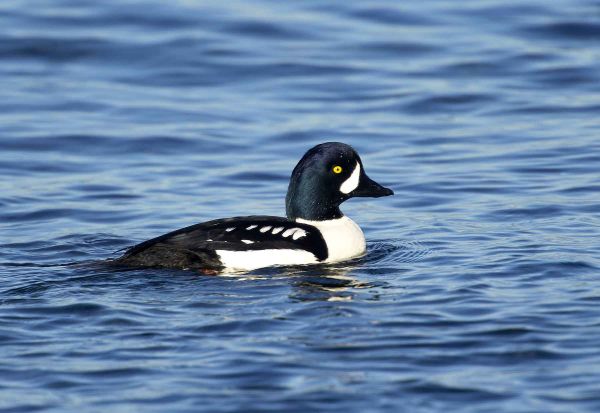
This sea duck has a striking yellow / golden eye and is named after Sir John Barrow. The Barrow’s Goldeneye is a diving bird, eating insects, vegetation and crustaceans. The Barrow’s Goldeneye is a pretty quiet bird until breeding season when it squeaks and croaks in a low volume. Did you know that the female Barrow’s Goldeneyes return to the same breeding site each year?
#7 – Calliope Hummingbird
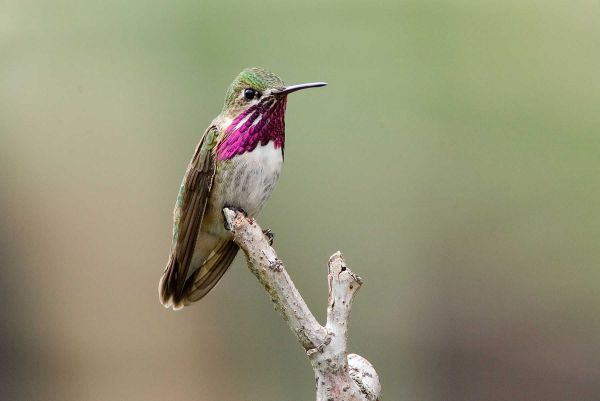
Did you know that the Calliope Hummingbird is the smallest bird that is native to the United States? This cutie likes to nest throughout Oregon and Washington and makes a long distance migration each year. Male Calliope Hummingbirds have fantastic wine-red streaks on their neck area, which is referred to as a gorget. You’ll notice greenish highlights on both the males and females. Males can flap their wings up to 95 flaps per second when they’re courting a female!
#8 – Greater Yellowleg
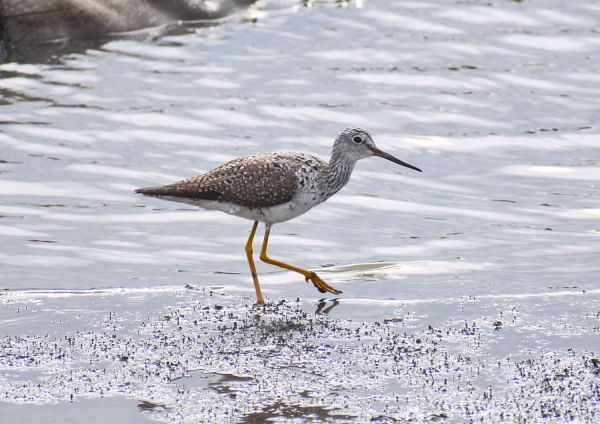
This strange looking bird looks like it belongs on a beach rather than a forest! The Greater Yellowleg migrates throughout the United States and enjoys foraging in shallow water. You can spot them by their long thin legs and long black beak which has a slight upward curve at the end. Yellowlegs are sometimes referred to as “tattlers”, because they would make a lot of noise when bird hunters were out looking for shorebirds.
#9 – Hooded Merganser
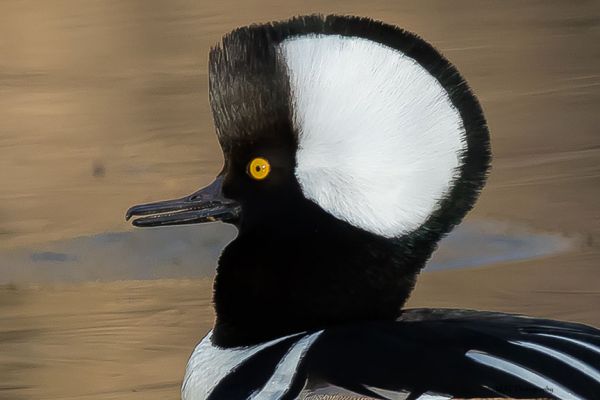
The Hooded Merganser is a small diving duck with a lot of style. While the male and female Hooded Mergansers have different color coats during breeding season, they can both raise and lower their crests (that’s the funny looking hat this one is wearing in the picture). When it’s not breeding season, the male looks very similar to the female Hooded Merganser with a greyish-brown body.
#10 – Wild Turkey
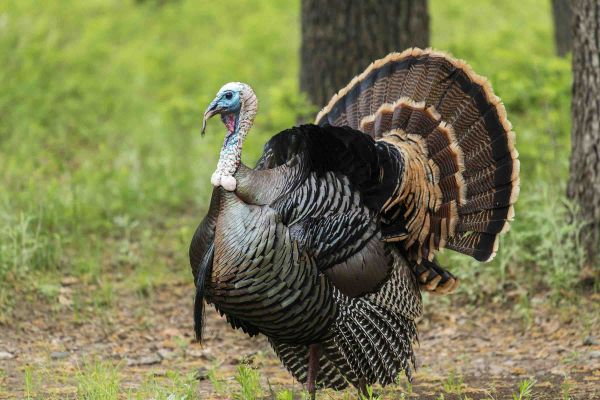
Have you ever seen a Wild Turkey? These proud birds are pretty prevalent in Oregon. A male adult tukey can weight up to 24 pounds! You’d think such a large bird couldn’t take flight, but Wild Turkeys can actually fly close to the ground for up to a quarter mile.
Your Guide to Mt Hood
Looking for fun activities, expert information and more? We’re pleased to provide information on the latest and greatest in Mt Hood, like which events to attend and where to stay when you come visit.
